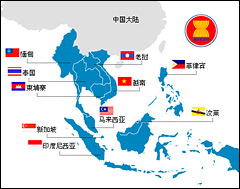Looking for more insights?
Sign up to stay informed about our latest article releases.
On January 1, 2010, the China-ASEAN Free Trade Agreement (CAFTA) came into force, part of the Chinese government’s effort to promote the idea of trade liberalization as well as to facilitate the development of the country’s southwestern region. The new FTA includes China and the Association of Southeast Asian Nations’ 10 member countries, covering a population of 1.9 billion and involving about US$4.5 trillion of trade volume. However, implementation won't be easy, and anxiety over China’s growing clout in world trade is on the rise in countries like the U.S. and Japan.

Sign up to stay informed about our latest article releases.